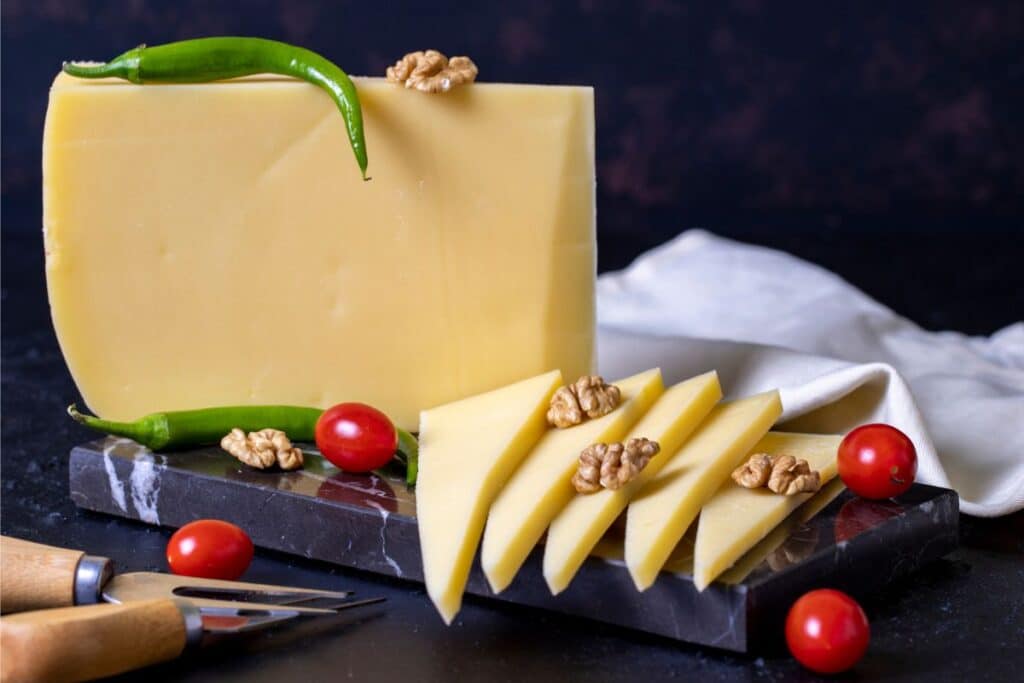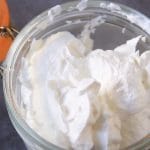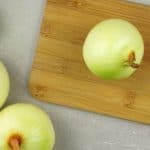In summary: Some of the Gruyère cheese substitutes are emmental cheese, comté, fontina cheese, gouda, dubliner, etc. We also give tips on how to choose the best substitute depending on the recipe and personal preference below.
Known as one of the best cheeses for baking, Gruyère has a distinctive flavor yet is not overpowering. This makes it popular in quiche, French onion soup, chicken cordon bleu, and croque-monsieur. With its salty and slightly sweet taste that varies with aging, Gruyère is also commonly used for fondues.
Regardless of which one of the above cheesy delights you’re making, all is not lost if you don’t have any Gruyère on hand. There are a number of other varieties you can use to bring the same flavor and textural components to your dish.
In this guide, we’ll help you pick the best Gruyère cheese substitute, depending on the dish you are making.
What is Gruyère Cheese?
Gruyère is an Alpine cheese made from cow’s milk. It is not the same as traditional Swiss cheese, known for the holes or eyes it develops during production. It doesn’t have any holes and develops small cracks with a slightly grainy texture when fully aged.
Young gruyere has a nutty and creamy taste with a bit of sweetness and saltiness. As it is aged for five to 12 months, it becomes more complex with a mature, earthy, and assertive taste.
Gruyère bought at grocery stores is generally the less mature version with a creamy texture and mild flavor.
This versatile cheese is great for melting and is also used in salads, grated into pasta, and even just served on bread. It really is suitable for almost any savory dish that calls for something cheesy.
How to Choose the Best Gruyere Cheese Alternatives?
When choosing the best Gruyère cheese substitutes for your recipe, consider whether the recipe requires a cheese that has good melting properties, is creamy or firm, has an assertive flavor, or has a milder taste.
The substitute you choose should match the desired properties; otherwise, it will change the flavor and texture of your dish.
Keep in mind that the aging of cheese significantly changes its properties. If your recipe calls for aged or mature Gruyère, choose a mature cheese alternative. Likewise, if you prefer a softer, milder flavor, go for a younger cheese, regardless of the replacement you pick.
Best Replacement for Gruyere Cheese
#1. Emmental Cheese
Emmental, also referred to as Emmenthal also originated in Switzerland. Although it has a distinct flavor, it is a mild cheese with less strength than aged Gruyère.
With good melting properties, Emmental is ideal for fondue, gratins, melting into soup, casseroles, pasta, grilled cheese sandwiches, and egg dishes. It has great versatility as it can also be eaten on cold sandwiches and served on a cheese platter.
#2. Comté
Comte is one of our top picks as a substitute for Gruyere cheese. This semi-firm French cheese has a very similar taste and creamy texture that melts in the same way. Made from unpasteurized cow’s milk, it is matured for a minimum of four months to two years.
Comte is pretty much Gruyère’s French twin. The main difference between the two, besides where they originate, is the aging process and the strength of flavor as they age.
Comte can be a little milder in flavor, and as a protected cheese, it can only be produced in the Franche-Comté region. It is, however, available in general grocery stores globally and in the US.
Use Comte as a perfect substitute for fondue, baked dishes, au gratin potatoes, and to serve with a charcuterie board.
#3. Fontina Cheese
Fontina is an Italian cheese with a mild buttery and slightly nutty flavor. It has a smooth, creamy texture and melts well, which makes it a good choice for pasta, pizza, and sandwiches. Fontina can even be served as a hot dip for bread combined with herbs and olive oil.
#4. Gouda
Gouda is semi-hard and has a somewhat different taste. However, when melted, its creamy texture and mildly nutty flavor pair well with many of the dishes Gruyere is used in. It has a softer flavor which makes it ideal for people who don’t enjoy potent cheeses.
If this is something you may already have on hand, go ahead and use it to bring a delicious cheesy element to your recipe.
#5. Dubliner
This Irish variety has a full flavor with nutty notes. It is generally available in most grocery stores which makes it an easy replacement. Although it is a hard cheese with a slightly crumbly texture, it can be baked into hot dishes, eaten alone, and is gorgeously creamy when melted.
#6. White Cheddar Cheese
We’ve included white cheddar since it might be something you already have in the pantry, and it is a familiar product. It has a complex taste that will elevate pasta, casseroles, sandwiches, and salads, although it won’t be a perfect flavor match.
If you have this in the pantry and enjoy the taste, don’t hesitate to use it as an easy alternative.
#7. Wensleydale
Wensleydale is a budget-friendly and easy-to-find alternative ideal for fondue, pizza, pasta, and grilled sandwiches with a similar melted taste and texture.
Made in Yorkshire, England, it often includes flavorings or fruit additions, so make sure you pick a plain variety when using it as a substitute.
#8. Raclette Cheese
Although raclette is a type of cheese, it is also the name of a dish prepared with this Swiss-made dairy. As a dish, the melty super creamy strands are served with boiled potatoes, cured meats, and pickles.
When using this as a replacement, note that there are different types of raclette. Some have a strong, buttery, and salty taste, while others are milder with fruity notes. It is ideal to use in its melted form but can also be a good replacement if you require slices for a platter of sandwiches.
#9. Jarlsberg Cheese
Although classified as a semi-soft Swiss-type cheese, Jarlsberg is actually from Norway. It is licensed for production in Ohio and Ireland by Norwegian dairy producers. It makes for a good flavor match, although slightly milder.
If your recipe calls for large quantities of melted cheese, this is a more budget-friendly alternative. Use it for fondue, macaroni, quiches, grated into casseroles, frittatas, and gratins. With its big eyes, it also looks beautiful sliced on cheese boards, sandwiches, and snack plates.
#10. Edam Cheese
Edam is a semi-hard Dutch cheese that you will likely recognize by its red or yellow wax rind. As a substitute, it is a good color match with a mildly salty and similar nutty flavor.
It makes a delightful snack served with crackers, diced into salads, and can be used to make lasagne, pasta, casseroles, and sauces since it is a good melting cheese.
#11. Engelberg Cheddar Cheese
Most of our substitute options up to now have had mild profiles. If a punchy flavor is what you’re after, this is a good choice. Engelberg resembles the taste of mature Gruyere and is aged for a similar length of time.
Engelberg Cheddar is considered a high-quality Swiss cheese with a hint of citrus and an earthy rich flavor. Enjoy it on crackers or bread, in sauces, baked into a quiche recipe, in savory muffins, loaves, and grated over other cooked dishes.
#12. Maasdam
This Dutch cheese is a very good option if you’re looking for an exact flavor match. Although only aged for four weeks, Maasdam ages quickly, bringing rich and complex flavors to your dish.
It is a semi-hard cheese with a different texture to Gruyere but can nonetheless be used in almost any recipe as a successful gruyere substitute.
#13. Graviera
Graviera is made from goat milk which adds a slight tang to the sweet and nutty flavor. As Graviera ages, the flavors intensify.
A young Graviera with a milder flavor makes the best alternative. However, if you like the punch of a stronger flavor, aged Graviera in small quantities can be deliciously mixed in salads, baked recipes, or grated over pasta.
#14. Le Brouere
If you need a Gruyere cheese replacement for quiche, this French cheese is a wonderful choice. It can also be used for other baked dishes to give a similar flavor and creaminess to that of aged Gruyere.
#15 & 16. Gruyere Cheese Alternatives with Strong Flavors
Tête de Moine and Appenzeller cheese are two Swiss kinds of cheese, both with strong aromas and a pronounced aged taste.
If you are into stinky cheese varieties, you’ll enjoy these in a salad, on sandwiches, or on a cheese plate. If the strong flavor is not to your liking, we suggest opting for a different alternative.
FAQs
Classic mozzarella is commonly used for pizza since it has the perfect balance of elasticity, moisture, and fat for a melted pizza topping.
Since many kinds of cheese are aged products, it only makes sense to think they shouldn’t go bad after expiry but rather just age more. Fresh cheese will start to discolor and smell sour when it starts going off. In this case, throw it out. Hard, aged cheese can still be safe to eat after its expiry. Cut off any mold, and if it hasn’t changed in smell or color, it will still be safe to eat. If the texture, color, or odor is altered, it’s best to throw it out.
Leftover fondue can be used to make a sauce for pasta and veggies as well as on a grilled cheese sandwich. You can also add it to baked potatoes and other potato dishes, casserole toppings, and warm egg dishes.
Yes, you can use Parmesan as a substitute for Gruyere in certain dishes, but be aware that the flavor and melting properties will differ. Parmesan has a strong, nutty taste and might not melt as smoothly as Gruyere, so consider adjusting quantities and combining with other cheeses for best results.
Conclusion
When making a delicious cheese recipe, there’s often a lot of room to play around with the strength and type of flavor profile you prefer. When choosing the best substitute for gruyere, decide whether the flavor or texture (or both) is most important in your dish.
If you’re making fondue, for example, you’ll definitely need a cheese that melts well, whereas if you’re making a sandwich or eating cheese with crackers, the melting properties may not be as important.
The potency of cheeses can vary greatly as they age, so be mindful to check this when making a purchase. Now, go and enjoy your ooey-gooey goodness!
*image by enezselvi/depositphotos









